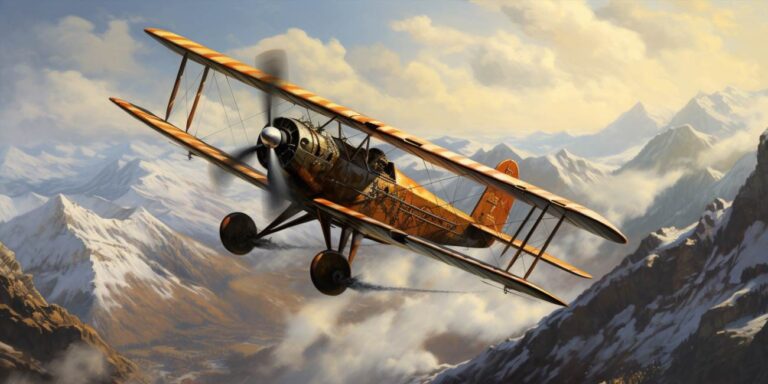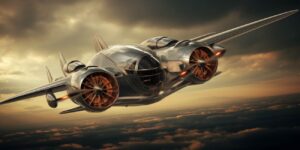The Wright brothers, Ohio natives with an insatiable curiosity for flight, commenced their aeronautical endeavors in the late 19th century. They tirelessly conducted experiments and observations, unraveling the secrets of lift, drag, and control. In 1903, their relentless pursuit bore fruit as they achieved the first controlled, sustained flight of a powered, heavier-than-air aircraft at Kitty Hawk, North Carolina.
Their aircraft, aptly named the Wright Flyer, featured a biplane design and was powered by a 12-horsepower engine. This pioneering achievement marked the beginning of the aviation era, shattering long-standing beliefs about the impossibility of human flight. The Wright brothers’ meticulous research and innovative designs laid the foundation for modern aviation.
Contrary to popular belief, the controversy over who was the first person to invent the airplane extends beyond the Wright brothers. Some contend that Gustave Whitehead, a German immigrant living in the United States, flew a powered aircraft in 1901, predating the Wright brothers’ accomplishment. However, historical evidence supporting Whitehead’s claim is contentious, and the consensus remains in favor of the Wright brothers.
Their accomplishment catapulted the brothers into global prominence, and their aircraft became the blueprint for subsequent aviation developments. The significance of the Wright brothers’ achievement is etched in history, marking a transformative moment that propelled humanity into the skies and opened up new frontiers of exploration and connectivity.
While the debate over who was the first person to invent the airplane may persist in historical discourse, the Wright brothers’ legacy endures as a symbol of human ingenuity and determination. Their contributions to aviation not only revolutionized transportation but also laid the groundwork for the aeronautical advancements that continue to shape the world today.
The wright brothers and the first powered flight
The Wright brothers, Orville and Wilbur, are credited with achieving the first powered flight in history. This monumental event took place on December 17, 1903, near Kitty Hawk, North Carolina, USA.
Before this historic moment, the brothers had dedicated years to studying the principles of flight and experimenting with gliders. Their fascination with flight was fueled by a deep curiosity and determination to conquer the skies. It was this passion that led them to develop the Wright Flyer, the aircraft that would change the course of history.
The Wright Flyer was a biplane with a wingspan of 40 feet and a weight of approximately 600 pounds. The key innovation that set it apart was the inclusion of a 12-horsepower engine designed and built by the Wright brothers themselves. This engine powered two specially designed propellers, enabling the aircraft to achieve powered, controlled flight.
The first flight lasted a mere 12 seconds, covering a distance of 120 feet. Orville piloted the Flyer while Wilbur ran alongside to assist with the takeoff. The subsequent flights on the same day saw gradual improvements, with the longest flight lasting 59 seconds and covering a distance of 852 feet.
It’s essential to highlight that the Wright brothers’ achievement was not merely about getting an aircraft off the ground; it was about achieving controlled flight. They introduced a system of three-axis control, which allowed the pilot to steer the aircraft effectively. This innovation laid the foundation for modern aviation and is a crucial aspect of their legacy.
The success of the Wright Flyer marked the beginning of the aviation era. The brothers continued to refine their designs, and their contributions to aeronautics extended beyond the historic flights at Kitty Hawk. They obtained a patent for their airplane control system in 1906, solidifying their place in history as pioneers of aviation technology.
Despite facing skepticism and challenges, the Wright brothers’ perseverance and ingenuity propelled humanity into a new era of transportation. Their legacy lives on, and every time a plane takes off, it pays homage to the monumental achievement of the first powered flight by Orville and Wilbur Wright.
Other early flying machines and their inventors
Long before the Wright brothers achieved their historic flight, several inventors were experimenting with early flying machines. One notable figure in this pursuit was Samuel Langley, whose contributions laid the groundwork for future aviation endeavors.
Langley’s significant creation was the Aerodrome, an unmanned, steam-powered aircraft. Developed in the late 19th century, the Aerodrome was an attempt to conquer the skies. Although not successful in manned flight, it marked a pivotal moment in the timeline of aviation evolution.
Shifting our focus to another trailblazer, we encounter the Brazilian aviator Alberto Santos-Dumont and his iconic aircraft, the 14-bis. This pioneering design made history in 1906 as the first publicly witnessed powered flight in Europe. The 14-bis, with its canard configuration and forward-mounted elevator, showcased Santos-Dumont’s innovative approach to aviation engineering.
Unlike some early flying machines that struggled for recognition, the 14-bis captured the imagination of the public and established Santos-Dumont as a leading figure in the aviation community. His achievements contributed significantly to the evolution of powered flight.
Meanwhile, on the other side of the globe, a New Zealand inventor named Richard Pearse was making strides in aviation. While Pearse’s exact contributions and their chronology are debated, he is credited with a powered flight attempt in 1903, predating the Wright brothers by several months.
The Richard Pearse aircraft, reportedly a monoplane, demonstrated Pearse’s determination to conquer the skies. Despite lacking widespread recognition during his time, modern aviation enthusiasts acknowledge Pearse’s role in the early development of flight.
To summarize, the prelude to the Wright brothers’ achievement includes the ambitious endeavors of Samuel Langley with his Aerodrome, Alberto Santos-Dumont’s triumph with the 14-bis, and the pioneering spirit of Richard Pearse. Each inventor contributed unique elements to the narrative of early aviation, marking the fascinating journey toward humanity’s conquest of the skies.
Modern airplanes – how they evolved from early designs
The evolution of airplanes traces back to the pioneering designs of the Wright brothers, who successfully achieved powered flight in 1903. Since then, the aerospace industry has witnessed a remarkable transformation, with technological advancements propelling the development of modern airplanes.
One of the key players in this evolution is Boeing, a giant in the aviation sector. Boeing has played a pivotal role in shaping the landscape of commercial aviation with iconic models like the Boeing 707 and the revolutionary Boeing 747, which introduced the era of jumbo jets. The company’s commitment to innovation and engineering excellence has solidified its position as a leading aircraft manufacturer.
On the other side of the spectrum, we find Airbus, a European giant that has emerged as Boeing’s main competitor. The Airbus A320 family, A380, and more recent A350 XWB showcase Airbus’s dedication to cutting-edge technology and fuel efficiency. The rivalry between Boeing and Airbus has driven continuous advancements in aircraft design and performance.
When discussing jet engines, it’s impossible to overlook their transformative impact on aviation. Jet propulsion, a departure from traditional propeller-driven engines, brought about unprecedented speed and efficiency. The development of high-bypass turbofan engines, such as the ones powering Boeing’s 777 or Airbus’s A320neo, marked a significant leap forward in fuel efficiency and reduced environmental impact.
One of the critical aspects that enabled the expansion of commercial aviation is the introduction of pressurized cabins. Early aircraft operated at lower altitudes, limiting their range and passenger comfort. Pressurized cabins revolutionized air travel by allowing planes to cruise at higher altitudes where the air is thinner, enhancing fuel efficiency and passenger well-being. Both Boeing and Airbus integrate pressurized cabin technology into their modern fleets.
Examining the intricate details of modern airplanes reveals a convergence of engineering brilliance and technological innovation. Boeing and Airbus continue to push the boundaries of what is possible, with jet engines driving efficiency and pressurized cabins enhancing the overall travel experience. As these giants compete for supremacy in the aviation market, passengers can anticipate a future where air travel becomes increasingly efficient, sustainable, and comfortable.






